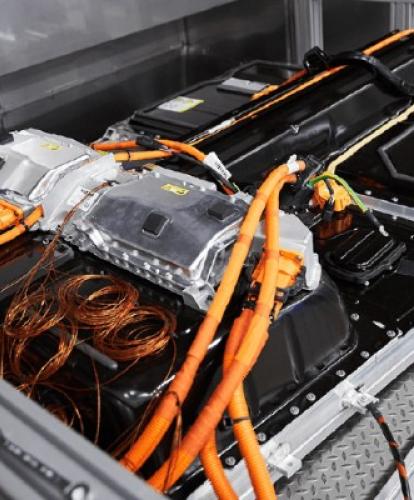Volvo Cars is aiming to develop recycling loops in a global initiative to reduce CO2 emissions and expenses. This involves recycling high-voltage batteries from plug-in hybrids and electric cars, among other things.
In total, the Swedish company wants to save 2.5 million tonnes of CO2 and one billion Swedish kronor (about £85 million) per year from 2025 onwards by processing, repairing and reusing emission-intensive materials in car production. This will not involve individual pilot projects but measures at all Volvo plants worldwide.
“Volvo Cars has one of the most ambitious climate plans in the car industry, and if we are to reach our goals, we need to embrace the circular economy,” said Anders Kärrberg, responsible for global sustainability at Volvo Cars.
“This requires us to rethink everything we do and how we do it. We put a strong focus on integrating sustainability into the way we think and work as a company, and we are making it as important as safety has always been to us.”
This is not just about recycling waste and offcuts from the production of the cars, but also about further developing production processes so that material is used more efficiently and waste is not created in the first place.
Rethinking waste
“Disposing of waste will become more expensive in the future,” said Kärrberg. “That’s why we want to avoid waste directly.”
When it comes to recycling, even small measures are helpful. Instead of a bin for scrap metal, different metals are to be separated directly in the factory, making subsequent reprocessing much easier. Transport is also an issue the company has considered.
“Logistics and transport costs are an important factor in the recycling business model,” said Kärrberg. “As with manufacturing, localising supply chains and keeping distances short has a huge impact on sustainability.”
Seen and not seen
Not every material is suitable for recycling, of course: “Painted surfaces and parts visible to the customer are still difficult,” he added.
However, components the customer doesn’t see, and for which no development is necessary, could be designed in the future so that they last the life of the vehicle and could later be installed in a new car.
This probably won’t apply to an important environmental factor in electrified cars: batteries. Volvo’s batteries, for example, are designed to last 15 years in the vehicle. After that, they can be used in second-life applications.
Volvo is currently working on two pilot projects in this area. In cooperation with BatteryLoop, solar-powered energy storage systems are being produced from the batteries of electrified Volvos. From April, the system will be used to power charging stations for electric vehicles and e-bikes at the business centre of Swedish hygiene and healthcare company Essity near Gothenburg, according to Volvo.
Volvo’s news comes after last month’s announcement from the Renault Group that it will cooperate with waste disposal and recycling specialist Veolia and chemical group Solvay in the development of a circular economy for metals from the used batteries of electric vehicles.



